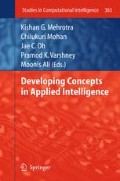Abstract
We describe CP-Rota, a new constraint programming application for rotating workforce scheduling that is currently being developed at our institute to solve real-life problems from industry. It is intended to complement FCS, a previously developed application. The advantages of CP-Rota over FCS are a significantly smaller and more maintainable code base, portability across a range of different language implementations and a more declarative approach that makes extensions easier and mistakes less likely. Our benchmarks show that CP-Rota is already competitive with FCS and even outperforms it on several hard real-life instances from the literature.
Access this chapter
Tax calculation will be finalised at checkout
Purchases are for personal use only
Preview
Unable to display preview. Download preview PDF.
References
Balakrishnan, N., Wong, R.T.: A network model for the rotating workforce scheduling problem. Networks 20, 25–42 (1990)
Butler, B.: Computerized manpower scheduling. Master’s thesis, University of Alberta, Canada (1978)
Chan, P., Weil, G.: Cyclical staff scheduling using constraint logic programming. In: Burke, E., Erben, W. (eds.) PATAT 2000. LNCS, vol. 2079, pp. 159–175. Springer, Heidelberg (2001)
Gärtner, J., Musliu, N., Slany, W.: Rota: A research project on algorithms for workforce scheduling and shift design optimisation. Artificial Intelligence Communications 14(2), 83–92 (2001)
Heller, N., McEwen, J., Stenzel, W.: Computerized scheduling of police manpower. St. Louis Police Department, St. Louis (1973)
Laporte, G.: The art and science of designing rotating schedules. Journal of the Operational Research Society 50, 1011–1017 (1999)
Laporte, G., Pesant, G.: A general multi-shift scheduling system. Journal of the Operational Research Society 55(11), 1208–1217 (2004)
Mörz, M., Musliu, N.: Genetic algorithm for rotating workforce scheduling. In: Proceedings of second IEEE International Conference on Computational Cybernetics, Vienna, Austria, pp. 121–126 (2004)
Musliu, N., Gärtner, J., Slany, W.: Efficient generation of rotating workforce schedules. Discrete Applied Mathematics 118(1-2), 85–98 (2002)
Musliu, N.: Heuristic Methods for Automatic Rotating Workforce Scheduling. International Journal of Computational Intelligence Research 2(4), 309–326 (2006)
Pesant, G.: A regular language membership constraint for finite sequences of variables. In: Wallace, M. (ed.) CP 2004. LNCS, vol. 3258, pp. 482–495. Springer, Heidelberg (2004)
Author information
Authors and Affiliations
Editor information
Editors and Affiliations
Rights and permissions
Copyright information
© 2011 Springer-Verlag Berlin Heidelberg
About this chapter
Cite this chapter
Triska, M., Musliu, N. (2011). A Constraint Programming Application for Rotating Workforce Scheduling. In: Mehrotra, K.G., Mohan, C., Oh, J.C., Varshney, P.K., Ali, M. (eds) Developing Concepts in Applied Intelligence. Studies in Computational Intelligence, vol 363. Springer, Berlin, Heidelberg. https://doi.org/10.1007/978-3-642-21332-8_12
Download citation
DOI: https://doi.org/10.1007/978-3-642-21332-8_12
Publisher Name: Springer, Berlin, Heidelberg
Print ISBN: 978-3-642-21331-1
Online ISBN: 978-3-642-21332-8
eBook Packages: EngineeringEngineering (R0)

